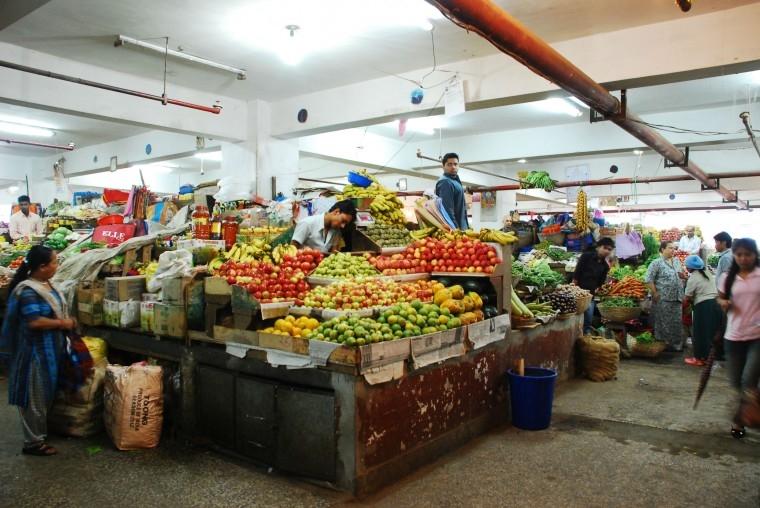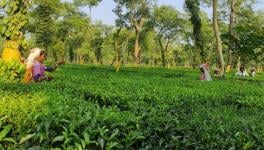How Sustainable is Sikkim’s Vegetable Import Ban?

Image Courtesy: Maps of India
On Thursday, December 14, the state cabinet of Sikkim approved a list of agricultural and horticultural goods to be banned from import into the state. The ban is in line with the state government’s Organic Mission which began in 2003. The list of non-organic produce to be banned from March 31, 2018, according to Sikkim Express includes cereals and maize, beans, brinjal, bitter gourd, bottle gourd, broccoli, cabbage, cauliflower, capsicum, carrot, chayote, cucumber, drumstick, lady’s finger, leafy vegetables, spinach, pea, radish, tomato, pointed gourd, green chili, and turmeric. The fruits banned include banana, guava, mango, orange and papaya. The next phase which will take effect on March 31, 2019, will include onion, potato and garlic, as well as milk, packaged milk and mustard oil cake.
Sikkim Express mentioned that the Sikkim Agriculture Minister, Somnath Poudyal said “During the Darjeeling hills bandh, there were sufficient vegetables in the markets for the consumption of the consumers in Sikkim. All these vegetables were grown by the local farmers.” Poudyal said that the farmers in Sikkim are happy about the state government’s decision and that they would get good prices for their products. He also added that the people of Sikkim will have a good health while contributing towards safeguarding the environment.
The Minister also said that a mechanism is being worked out by the State government to implement the prohibition on entry of the listed vegetables and fruits at the check posts. There are also plans to develop collection centres for vegetables and set up cold storages.
The Chief Minister Pawan Chamling had earlier expressed the plan at the state level Panchayat Sammelan for Panchayats and Urban Local Bodies at Manan Kendra. Chamling in his speech said that Sikkim should be self-sufficient in food grains, along with being self-sufficient in dairy, poultry and meat by 2020.
The Organic Mission in Sikkim began in 2003 and in 2016 Sikkim was declared to be ‘fully organic’. The same year, agricultural scientists pointed out that Sikkim was ‘food deficient’ and that the existing levels of production could meet only 30% of the local population’s dietary needs. They claimed that the government had avoided discussion on ‘food self-sufficiency’ and ‘adequate nutrition’ for the local population. This is keeping in mind that the total cultivable land is around 75,000 hectares. In 2016 the combined number of foreign and domestic tourists in Sikkim was at 8,06,775 a number higher than the total population of the state. Organic farming is known to have lower crop yields than conventional farming. The transition period for shifting to organic farming also sees drastically low yields due to attacks from pests. Farmers in Sikkim are not exempt from this. However, in a study conducted among mandarin orange growers in the southern districts of Sikkim and Darjeeling, Urbashi Pradhan found that a part of the blame for low yields lay on changing climatic patterns.
The changing climatic conditions have not just impacted agriculture in the hills with unseasonal hailstorms, it has even impacted groundwater, another important component of agriculture. Despite possessing the highest number of glaciers in India (84), large parts of Sikkim are water stressed. This is partly due to the changing nature of the monsoon. In the past Asaar, a sowing festival would launch the sowing season. Asaar could only be celebrated when the ‘right type of rain’, a moderate shower, began. Asaar has almost disappeared in Sikkim as the ‘right type of rain’ does not occur anymore. The monsoon now is brief and heavy. The large volume of water cannot be absorbed by the soil, causing landslides and surface soil erosion, which has led to streams and springs drying up.
In 2012, Sikkim began the ‘Dhara Vikas’ Scheme, a scheme under which springs would be recharged by building catchment areas. Sandeep Thambe, an Indian Forest Service officer conceived the scheme. The scheme has seen sporadic success as a large part of its success depends on locals cooperating with each other in the area where it is to be implemented. Catchment areas are designed to be on the hill ridges. The area on top of the ridge should have no construction as it prevents water from seeping into the soil, several small ponds or soft dams are built along the slopes to reduce the runoff.
There are additional complications when the hydropower projects are considered. The hydropower projects in Sikkim consist of multistage run-of-the-river dams on the Teesta and Rangeet, the two main rivers of Sikkim comprising the Teesta Water Catchment Basin. These projects require building extensive tunnels by blasting to channel the water away from its normal course. At present, there are 11 dams in Sikkim that have been completed and 8 more that are being constructed. Several seismologists have remarked that the dams will contribute to the greater frequency of earthquakes in a seismologically sensitive zone like the Himalayas. The main fault-line in the Sikkim Himalayas can be located at Kalijhora on which a dam has already been constructed. In September 2011 6.8 magnitude earthquake struck Sikkim, it is claimed the earthquake is also partly to blame for the streams and lake drying up. However, the dams can take a part of the blame for contributing to the earthquake.
With an uncertain water supply and a high risk of landslides and earthquakes, it is difficult for Sikkim to engage in commercial agriculture. However, in 2017 the picture became strangely different. In the past whenever an agitation for Gorkhaland was launched in Darjeeling, Sikkim starved. This was because the highway NH10, the only route connecting Sikkim with India would get choked, with vehicles defying the ban on movement getting attacked. The recent 104-day shutdown in Darjeeling did not greatly affect the availability of vegetables. This was also in part due to the heavy deployment of security forces along the highway. Another contributor was the slowdown in the number of tourists entering Sikkim during this time.
The state government’s decision to ban the import of several agricultural and horticultural products into Sikkim may be good news to the farmers in the state. However, the ordinary consumer may eventually pay the price for shortages, particularly when the tourist inflow picks up in 2018 and 2019, provided that the Gorkhaland agitation does not pick up as well. On the other hand, there is substantial evidence that organically grown food is better due to the absence of pesticide residue and antibiotic-resistant bacteria.
Get the latest reports & analysis with people's perspective on Protests, movements & deep analytical videos, discussions of the current affairs in your Telegram app. Subscribe to NewsClick's Telegram channel & get Real-Time updates on stories, as they get published on our website.
























